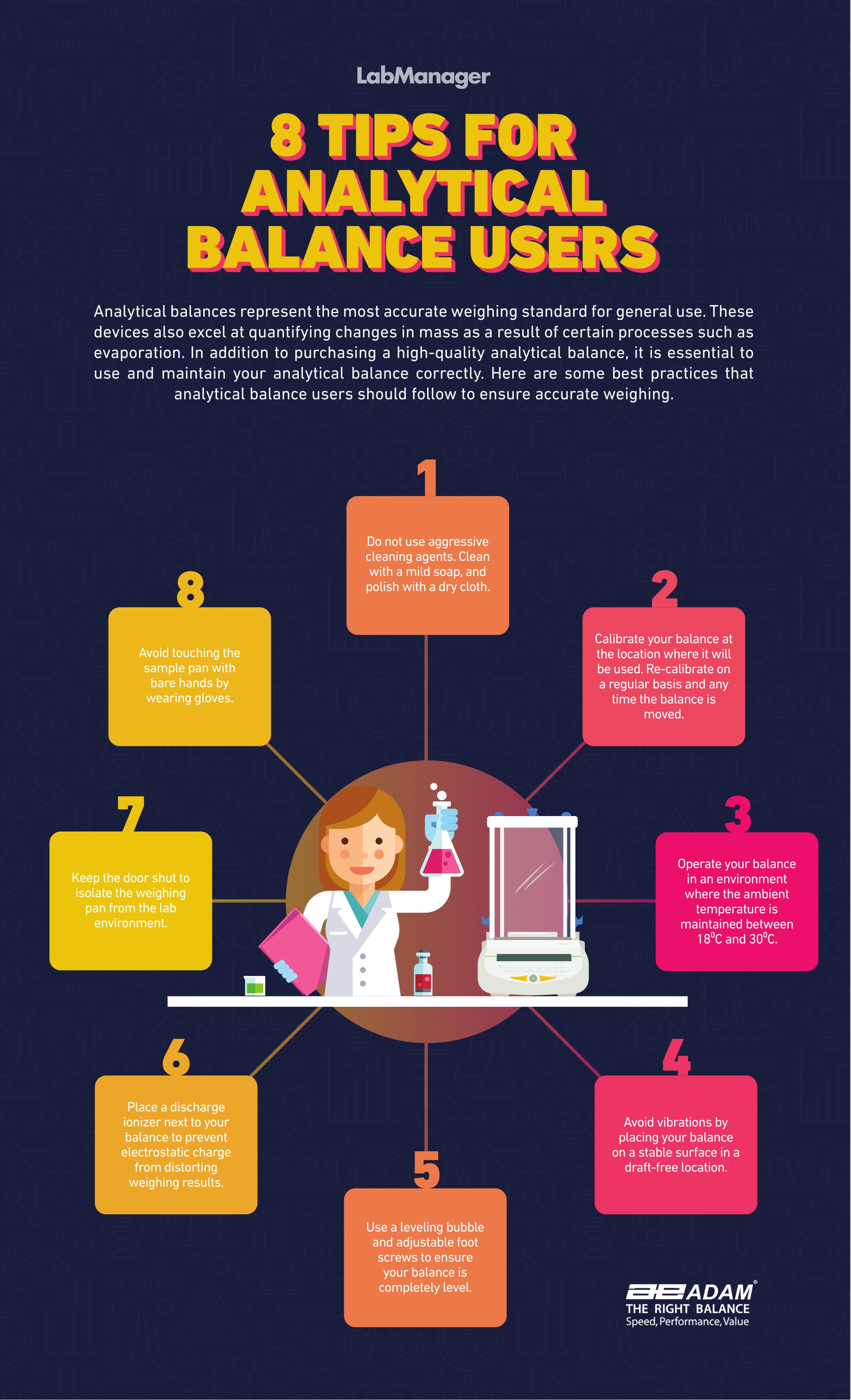How to Use Analytical Balance Correctly
Analytical Balances are the heart and soul of research and diagnostic laboratories where chemicals and samples are weight several times in a day. These weights further determine what the results would be, so it is critical to ensure that the weighing procedure is error free. Even a tiny bit of callousness, for example, waiting for a long time before weighing a material that absorbs moisture can change the actual weight and potentially lead to wrong results. On the other hand, consistent errors in results can lead to a loss of equipment investment and also jeopardize compliance with industry standards. This 8 step guide is a simple reminder of how to maintain your analytical balance and make the weighing procedure accurate and precise, always.

Infographic Transcript
Analytical balances represent the most accurate weighing standard for general use. These devices also excel at quantifying changes in mass as a result of certain processes such as evaporation. In addition to purchasing a high-quality analytical balance, it is essential to use and maintain your analytical balance correctly. Here are some best practices that analytical balance users should follow to ensure accurate weighing.
Tip 1
Do not use aggressive cleaning agents. Clean with a mild soap, and polish with a dry cloth.
Tip 2
Calibrate your balance at the location where it will be used. Re-calibrate on a regular basis and any time the balance is moved
Tip 3
Operate your balance in an environment where the ambient temperature is maintained between 180C and 300C.
Tip 4
Avoid vibrations by placing your balance on a stable surface in a draft-free location.
Tip 5
Use a leveling bubble and adjustable foot screws to ensure your balance is completely level.
Tip 6
Place a discharge ionizer next to your balance to prevent electrostatic charge from distorting weighing results.
Tip 7
Keep the door shut to isolate the weighing pan from the lab environment.
Tip 8
Avoid touching the sample pan with bare hands by wearing gloves.

